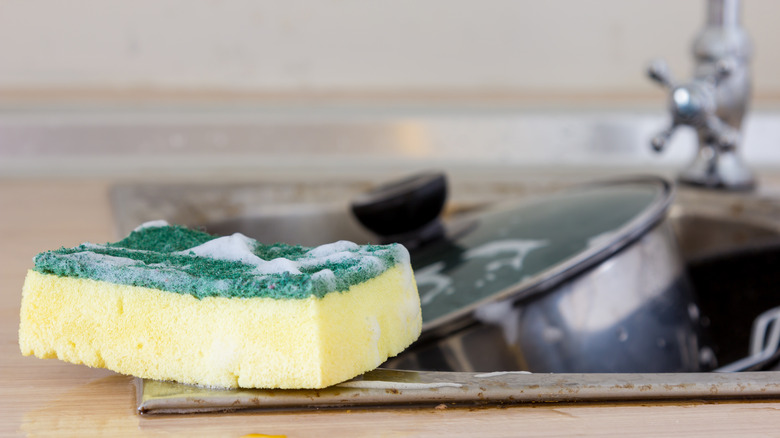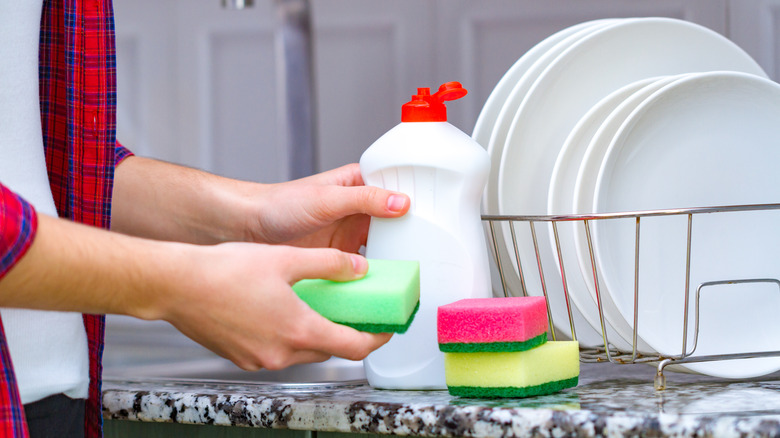Think Twice About Reusing That Sponge Around The House
Many of us have a designated kitchen sponge to clean off dishes, which may then be used to wipe down the counters at the end of the day. Using one sponge to wipe down multiple parts of a room may sound like an economical idea, but it can cause more problems than you might think.
It is common to use a sponge to wash dirty dishes that have had raw meat on them and are thus teeming with bacteria, so it makes sense that you wouldn't then want to rub the same sponge all across your countertops. Reusing the same sponge can spread these germs across your whole kitchen — it's a recipe for cross-contamination.
Once bacteria comes into contact with a sponge, it tends to stay there for quite some time. The combination of multiple tiny holes that can trap bacteria and humidity encourages bacteria growth. According to a report published in the Institute of Food Science & Technology, bacteria on sponges can last from hours to days.
Use separate sponges for different tasks
Sponges are dirty: In fact, they are one of the dirtiest places in your kitchen, and an easy option is to avoid them altogether. According to Science, sponges harbor zillions of types of bacteria. Salmonella, E. coli, and campylobacter found in a sponge can transfer to various surfaces, resulting in an infection and food poisoning. Signs include vomiting, diarrhea, stomach cramps, headache, fatigue, and fever, (via MedicineNet).
However, if you still want to use sponges, the best way to keep bacteria and germs from spreading is to use a specific sponge for each task in your kitchen. One sponge should be designated for dishes only, and another can be used to wipe down counters. You might also want another one for cleaning the microwave and oven. The key is to make sure all family members are on board, and having different colored sponges for each task helps. Another way to avoid spreading germs is to use a sponge for the dishes and a microfiber cloth for the counters, to avoid which sponge should be used for each task.
Sponges should be cleaned frequently. Running them through the dishwasher or placing them in the microwave kills 99 percent of germs (via the USDA). A couple of times a week, either put your sponge through a full dishwasher cycle, or wet it and then throw it in the microwave for one minute, per Healthline. This will greatly lessen the bacteria load, but won't eliminate it completely, so replacing kitchen sponges every 1-2 weeks is advised.

